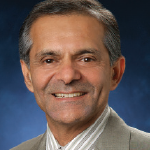One cannot open a paper, turn on the television, listen to the radio, or surf the Internet without finding something about healthcare reform. This heated topic is at the center of the media and was the focus of the American Medical Association’s (AMA’s) 2009 House of Delegates meeting in June, where President Barack Obama addressed the delegates of the largest physician’s organization in the United States. (For more on the address, see ”Obama and Clinton at the AMA” in the September 2009 issue of The Rheumatologist, p. 8.)
During his address, President Obama presented the most comprehensive statement on his platform to improve healthcare in America, focusing on the importance of achieving a healthcare reform bill this year. The president’s priorities include improving the health of all U.S. citizens and curbing the healthcare cost spiral that threatens the U.S. economy. His presence at the meeting encouraged support and open dialogue from the leadership of the AMA.
In addition to President Obama’s address, the House of Delegates meeting included an intense debate regarding the possibility of comprehensive reform of our healthcare system this year, with physicians wanting to ensure that their patients have access to care and that those who are currently uninsured have the opportunity to receive coverage.
The AMA has been engaged in healthcare reform discussions with both Congress and President Obama, and its policy supports the achievement of meaningful health system reform that follows six key concepts:
- Expanded coverage;
- Improved quality;
- Reformed government programs;
- Reduced costs;
- Increased focus on wellness/prevention; and
- Payment and delivery reforms.
Aside from general healthcare reform debate, where the focus surrounded physicians’ right to negotiate fair contracts with private and public payers, additional discussions included industry involvement with continuing medical education, health information technology, electronic health record principles, the patient-centered medical home, and Medicare payment reform.
During the House of Delegates meeting, the ACR’s political action committee, RheumPAC, was part of the host committee for a fundraiser for Rep. Tom Price, MD (R-Ga.). Rep. Price is an AMA Delegate representing the Medical Association of Georgia.
The ACR’s Role in the AMA
The ACR is represented in the AMA by Delegate Gary Bryant, MD, and Alternate Delegate Eileen Moynihan, MD. The ACR’s involvement with the AMA is critical to rheumatology. Why is it important for the ACR to be a member of the AMA House of Delegates? With this membership:
- Rheumatology has a voice on policy: The ACR has a place in the AMA House of Delegates, which is the policy-making body of the AMA.
- Rheumatology is represented in CPT discussions: The ACR has a voice as CPT codes are being developed and modified. Without a seat, the ACR has no role in CPT discussions and changes.
- Rheumatology is represented in reimbursement discussions: The ACR has a seat on the Relative Value Scale Update Committee, which makes recommendations to the Centers for Medicare & Medicaid Services regarding reimbursement for CPT codes.
- Rheumatologists become advocates: The AMA has the strongest lobby for organized medicine.
With approximately 250,000 members, the AMA is the largest association of physicians in the United States. Among medical societies, its voice is the loudest, its visibility the greatest, and its influence over medical issues the largest. Allow the voice of rheumatology to be heard on CPT issues, in the Relative Value Scale Update Committee, in the House of Delegates, and on federal issues. For an application to join AMA, visit the AMA Web site at www.ama-assn.org.

